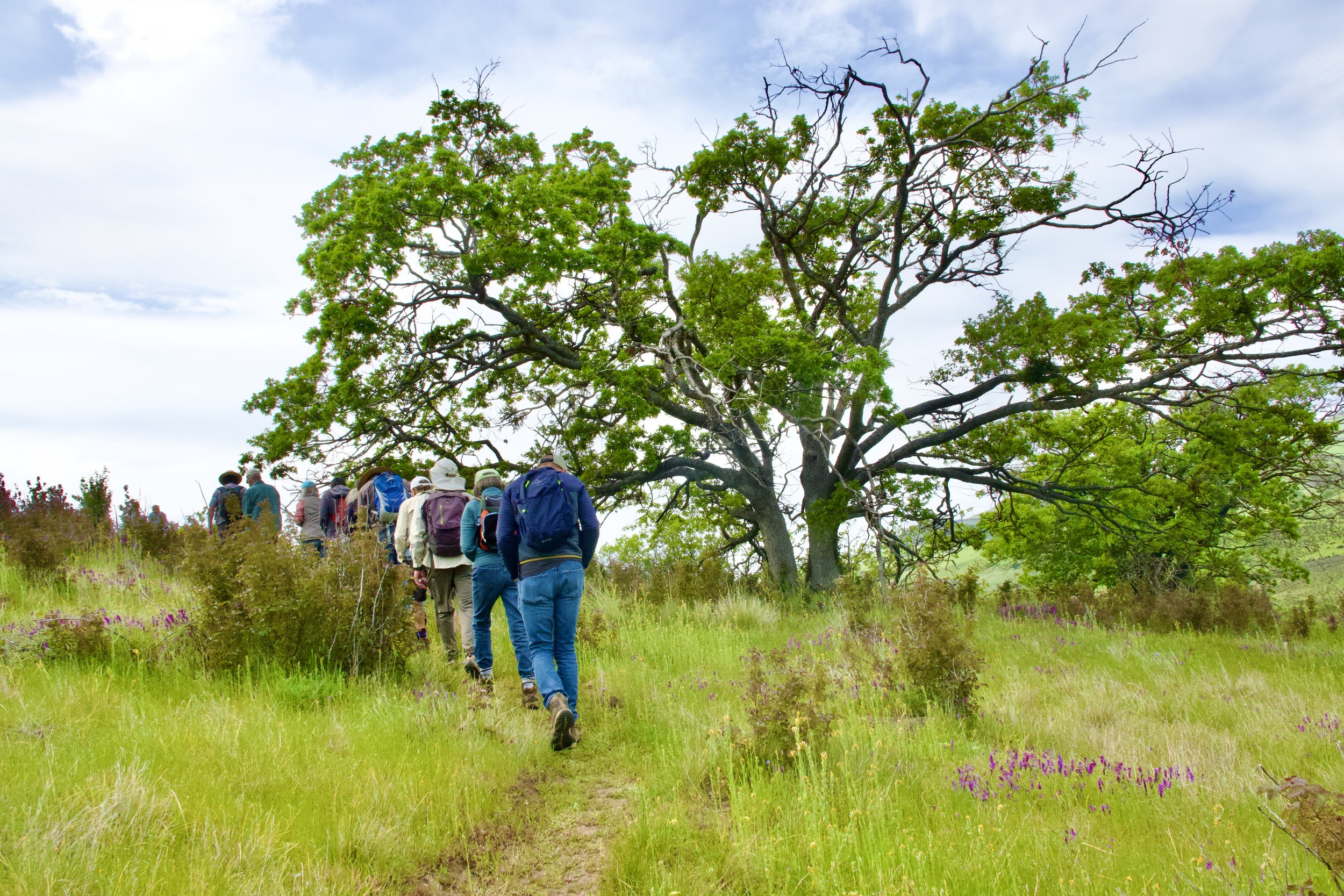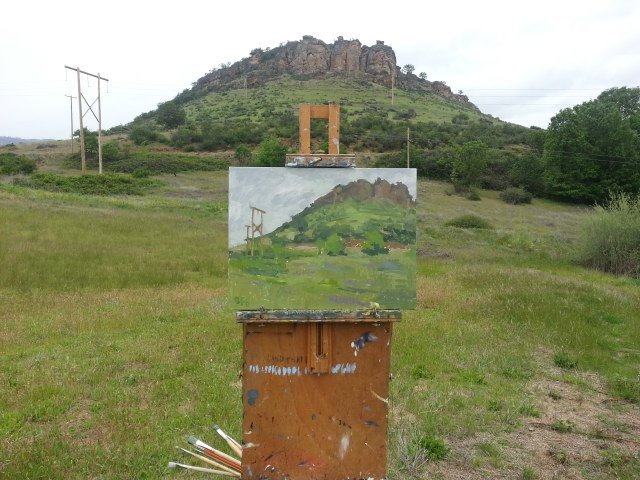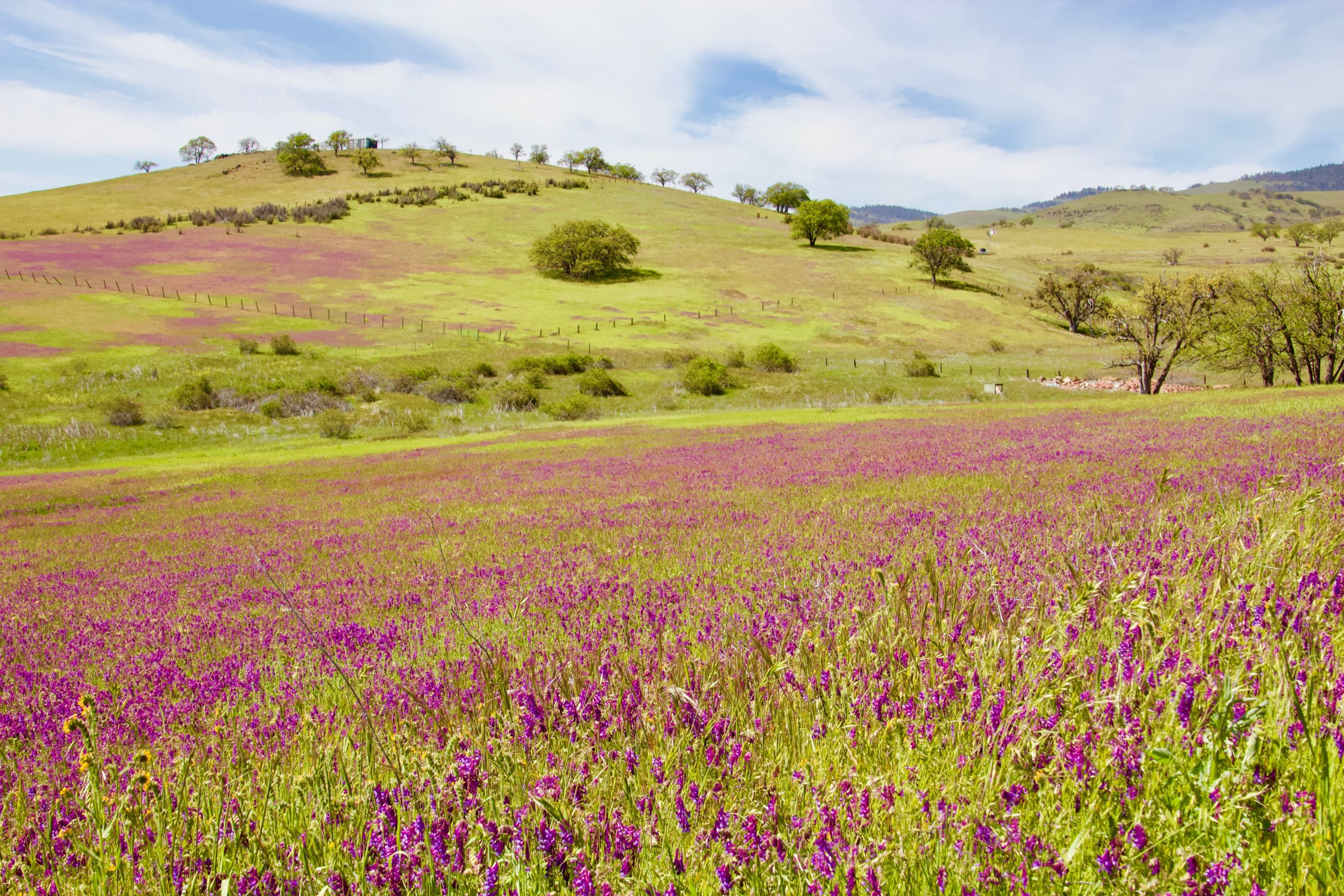Notes from the Land: Rogue River Preserve
The group watched as a vivid red dragonfly, a cardinal meadowhawk, began laying eggs in Kennedy Creek – the stream and nearby springs named after the first homesteaders who settled what is now called the Rogue River Preserve - her abdomen darting into the water like a sewing machine. Dragonflies have been laying eggs on streamside vegetation and water bodies for over 300 million years, long before flowers, bees, and elk appeared on earth. During the community walk last month led by Norm Barrett, a talented teacher and biologist, the group saw 15 dragonfly and damselfly species, countless flowers, and even an overworked Bullock’s oriole mother tending to her young suspended in a woven nest over the northern slough. Norm and fellow naturalist volunteers (Gary Schaffer, Howard Hunter, and Jim Livaudais) have been visiting the preserve every month to document and photograph the dragonflies on the property. To learn more about the dragonflies observed during the hike, click here.
During the walk, another volunteer, Linda Kappan, demonstrated how to catch and tag a monarch butterfly. She carefully placed a white sticker on one wing as part of a Washington State University research project that is documenting the migration route of monarchs in the Pacific Northwest, which up until now has been poorly understood. We hope someone else will catch this beautiful butterfly and report back the location where it was discovered. Linda regularly visits the Rogue River Preserve and is developing a comprehensive butterfly list. We are rich in talented volunteers!
Staff have also been contributing to research efforts at the Preserve. For instance, Karen Hussey installed some bird count monitoring stations this spring. We plan on contributing to local and national bird databases by documenting birds seen or heard at these stations every spring for long term monitoring of our bird neighbors. A few new plants were recently noted on the preserve including a small but darling orchid, Ladies’ tresses, found in a wet spot by the Rogue River. These new finds bring the list of known plants that live, reproduce, and grow on the property to 309 species. During surveys so far, staff and volunteers have documented 29 special status plants and animals, organisms that are rare and declining, at the Rogue River Preserve. This is a special place and we have been gaining momentum in obtaining grants and donations to keep a little bit of wild valley-floor, wild as well as to provide a forever home for wood ducks, elk, pond turtles, and cardinal meadowhawks.
Banner image: Cardinal Meadowhawk. Norm Barrett photo.












